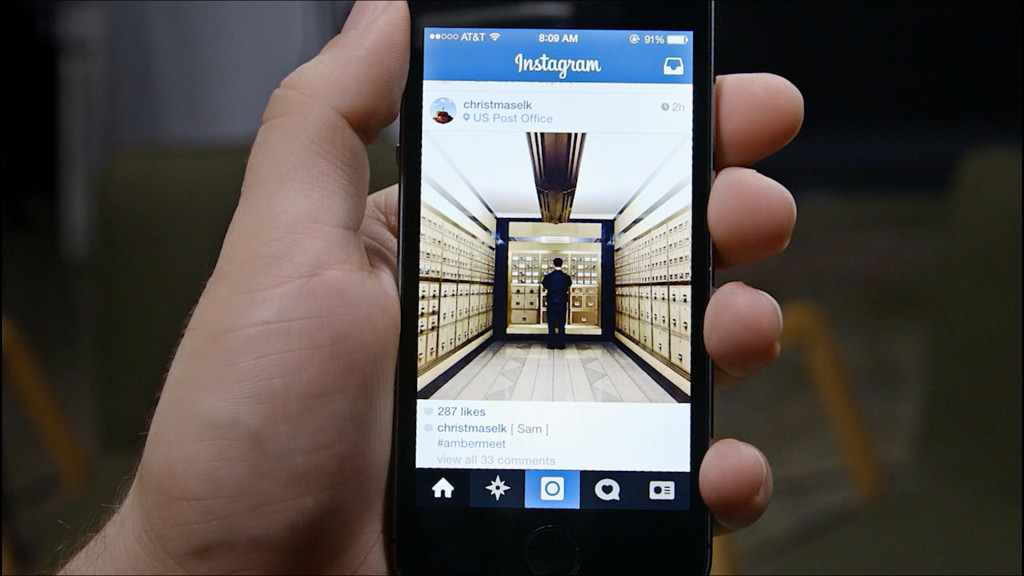Editor’s Note: Lindsey Buchanan is the director of social media at Ayzenberg. [a]listdaily is the editorial arm of Ayzenberg Group.
Earlier this month, Instagram broke the news they would be transitioning from a chronological feed to a more algorithmic experience. They assured that all the posts will still be there (floating around in the Insta-universe), just presented in a different order. Instagram will order posts “based on the likelihood you’ll be interested in the content, your relationship with the person posting, and the timeliness of the post.”
We're listening and we assure you nothing is changing with your feed right now. We promise to let you know when changes roll out broadly.
— Instagram (@instagram) March 28, 2016
How do users feel about this exactly? Well, the jury is still out.
In some ways, it makes total sense. It’s become harder and harder for users to keep track of posts. According to Instagram, the average user misses a whopping 70 percent of what’s in their feed. Now that may seem like a large number, but considering how much content is out there, it’s not that surprising. With a chronological feed, you’re somewhat limited to the amount of accounts you can follow before your feed becomes congested.
Introducing the algorithm is an attempt to alleviate this problem by making feeds more relevant and engaging. This will make it less daunting to follow more accounts, which could potentially increase follower count as a side effect. That said, the number of followers one has could become less relevant as people start to pay more attention to actual engagement. In addition, the algorithm could be a bit crippling for up-and-coming artists who won’t exactly have a level playing field now.
What does the algorithm change mean for Instagram’s users?
It means you don’t have to be there—checking your feed and likes—multiple times a day. The sense of immediacy isn’t there. Time is no longer of the essence. By having the most popular posts first, users could be discouraged from posting because their posts may not see as much engagement as in the past.
What does this mean for brands and influencers?
Brands will need to put more dollars behind their social or be *so awesome* that their content trends organically and remains at the top of the feed chain.
Sure, some were upset by the announcement, like the 328,018 who signed the Change.org petition to “Keep Instagram Chronological”. But—let’s be honest—the move was pretty much inevitable, but not all of us adapt well to change. Fortunately, Instagram knows this, which is why they’re approaching it in stages. Just before the announcement, Instagram sneakily moved a post’s time stamp from the top right to the bottom left. One assumes they did this to shift the focus from the time of day so the emphasis is not on how content appears chronologically.
Flash-forward a week later and people are taking matters into their own “handles” by posting personal prompts with the hashtags #turnmeon #letsstaytogether, in the hopes that their followers will be swayed to turn on notifications for all their posts.
People are clearly freaking out over the change, including many brands, celebs and aspiring influencers who don’t want to see their Insta-stock plummet overnight. The panic was all over the internet this week. Like brands, celebrities and influencers want to remain at the top and will do whatever they need to do to stay there, even if it means annoying people with shameless posts.
Or, you could do what this guy did and make fun of it while finding a way to use reverse psychology on his followers. Well done, @Fwiz.
Sick of seeing these posts on my feed
A photo posted by Ryan Wyatt (@fwiz) on
And then there is über–influencer, @kellyoxford, who uses her usual humor to be cool and act like she’s not jonesin’ for followers.
I MADE A MEME!!!! #happyMonday
A photo posted by kellyoxford (@kellyoxford) on
And the lovely @gracehelbig who does what everybody else is thinking.
So what’s next for Instagram?
According to Instagram’s blog, they are now offering 60-second video to everyone. Video view numbers are also available. Given Instagram is such a visual platform, it will be interesting to see if the platform’s algorithm will also factor in image recognition technology. For instance, if a user’s behavior shows that they tend to like pictures or videos of food or sunsets, will the algorithm be able to detect that and feed the user more food and sunsets? Time will tell, as we continue to receive more and more updates on the visually-stimulating yet time-sucking platform.
Lindsey Buchanan is the director of social media at Ayzenberg. Her work is a hodgepodge of creative strategy, entertainment marketing and technology, bringing content, brands and audiences together in unique and innovative ways. She enjoys coloring outside the lines and speaking in riddles and rhymes.

